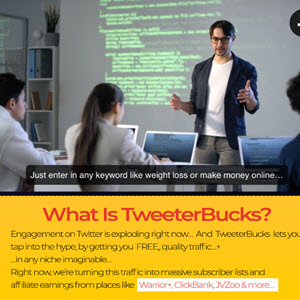Why B2B Marketers can't afford to ignore LinkedIn
We all know that social media can play a central role in any business’ marketing strategy – with studies suggesting that as many as 55% of B2B marketers use social to search for information related to the sales process.
But, while many companies are doing a great job on Facebook, Twitter and Google+, what might not be immediately apparent is just how important LinkedIn can be, particularly for B2B marketers.
Unsurprisingly, Facebook clearly dominates the social media market share – a recent survey showed that in December 2014, it has accounted for 56.5% of all social media site visits. YouTube was the second most visited with 20.58%, ahead of Google+ (3.85%) and Twitter (2.33%.) LinkedIn barely registers on the scale with just 1.3%, but that doesn’t even come close to telling the full story.
Put simply, LinkedIn is the largest professional network in the world…and, with reports of two new members joining every second, it’s growing at a rapid pace. It also has a proven track record for lead generation, individually generating more leads for B2B companies than Facebook, Twitter or company blogs. In fact, back in 2012, Hubspot reported that LinkedIn was 277% more effective for lead gen than Facebook and Twitter. But – and here’s the rub – only 47% of B2B marketers say they’re actively using LinkedIn, as opposed to 90% on Facebook.
And, as big as LinkedIn is already, it’s about to get even bigger. The company has a stated goal of $1 billion annual revenue from B2B services by 2017, which equates to 250% growth every year until that time.
In this article, we’ll talk a little about LinkedIn – we’ll explain why it’s an indespensable opportunity for B2B marketers, and give you some ideas on how to started.
LinkedIn: it’s just business
If, as we’ve covered above, LinkedIn has significantly less users than Facebook, you might be wondering why you should give it your attention more than you should other channels? It’s a fair question, and the answer comes down to how social networks are used.
Top-of-funnel B2B marketing is principally about reaching and engaging decision-makers. And, while Facebook is great in this regard – 81% of business decision-makers use Facebook at least monthly – more than half use it exclusively for personal purposes, and only 2% use it exclusively for business. This is compared to 26% of business-only users on LinkedIn (where only 7% of users spend their time primarily on personal pursuits.) [source]
It boils down to this: LinkedIn gives you the chance to reach your target buyer via a platform on which they’re already actively engaged in looking for work-based content.
The competition
Despite the fact that many B2B marketers are still working out an effective strategy for LinkedIn, many of them are already using it one form or another. Studies have shown that, on average, they use six different social networking platforms, with LinkedIn (91 percent), Twitter (85 percent), Facebook (81 percent), and YouTube (73 percent) the most popular for the sector.
As a professional platform which is heavily populated with your ideal target buyers, it’s important to have a consistent and high-quality presence on LinkedIn to keep ahead of your competition.
Knowledge sharing
The value of LinkedIn doesn’t begin and end with the content you share. It’s also an extraordinary platform to gain insights and knowledge from industry peers and experts. It’s been reported that 91% of ‘content revolutionaries’ use LinkedIn to post professionally relevant content – compared to 64% on online news sources, 29% on Twitter and 27% on Facebook. This makes LinkedIn a fantastic opportunity to monitor industry trends and develop your own expertise in your field. As with all modern marketing techniques, it’s as much about listening as it is speaking!
Reach
In recent years, it has become increasingly difficult to organically reach your users on Facebook. There’s some debate around an industry benchmark but some studies have suggested that the average Facebook status update could organically reach just 12.6% of your audience. While LinkedIn doesn’t offer 100% organic reach, it does exceed Facebook, with a status update, reaching an average of 20% of your audience.
Mobile
The emergence and growth of mobile in recent years has been staggering – and usage of LinkedIn has been no exception. It’s become a phenomenally popular mobile application. Whereas only 2% of unique visitors came to LinkedIn through mobile in 2008, it was reported that in Q1 2014, this number had increased to some 43%. This is a growing potential audience you could be able to expose your messaging to.
While this creates a phenomenal opportunity, it also highlights the importance of ensuring your messaging can be easily read and understood on mobile devices. Be sure to optimize your profile, and, when posting, remember to cater to the mobile audience by using messaging they can easily understand.
What content are users looking for?
In order to succeed on LinkedIn, it’s important to understand what your audience is likely to be looking for. Clearly, this differs by individual user. Various studies have sought to find out what the majority of users are looking for, and two in particular have produced fairly similar results. One suggested that the two biggest reasons professionals access content on LinkedIn are to “keep up with industry news” and “discover new ideas within the industry,” at 78% and 73% respectively. Another found that new, original research is the most in-demand content type sought by LinkedIn users (77%), followed by breaking news (68%), and case studies (55%).
Generally it seems that users are looking for content that’s up-to-date, on the pulse, and gives them a competitive advantage, so make sure that’s the stuff you share!
Getting started
There are plenty of great articles out there about advanced LinkedIn strategy, but if you’re just looking to get started, here are a few pointers:
Set up a company profile page but also stay active on your own profile. One of the strengths of LinkedIn is that it incorporates a fairly personal approach to business.
Use the powerful Search tools to find individual leads, brands and groups which fit your buyer personas.
Don’t be afraid to connect with people even if you don’t know them yet! Once you’re connected, reach out. Send a message, talk to them, and try to establish how you might be able to work together.
Most of all, if possible, publish original content…and try to make it stand out from the crowd. Not all users have publishing access yet but, if you do, make sure to use it. It’s a great way to get exposure for your brand and a sure-fire way to get involved in great conversations which can lead to genuine business gains.
Was this article helpful?


